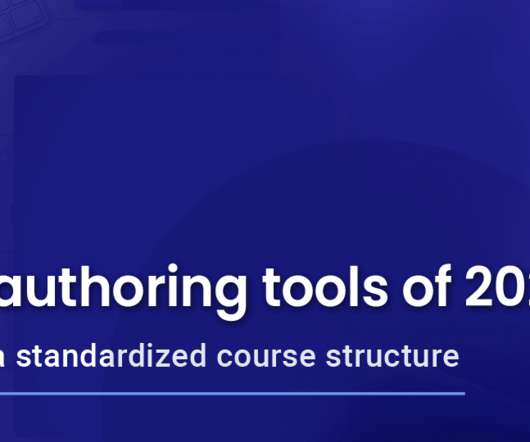Top 10 authoring tool in 2020 delivering engaging digital learning content
Paradiso
AUGUST 8, 2020
Authoring tools refer to web-based e-learning and are designed for particular styles of learning, file formats, delivery platforms, production workflows and eLearning standards. 2004), AICC, HTML5, xAPI/TinCan , cmi5, and LTI. . 1) Paradiso. 3) Elucidat. It’s easier for ambitious teams to produce digital learning at scale.
















Let's personalize your content